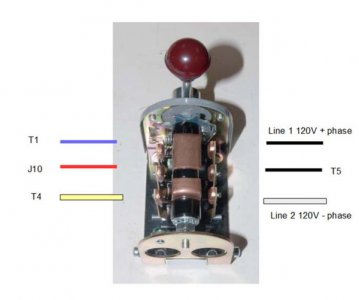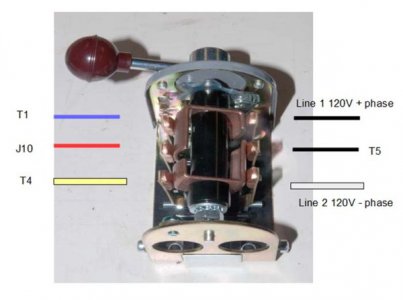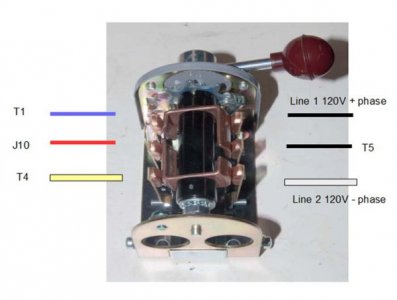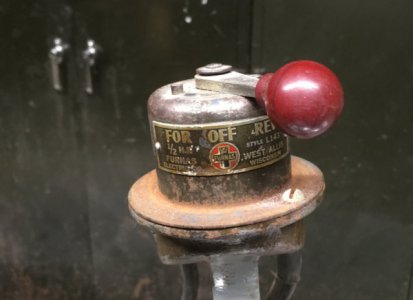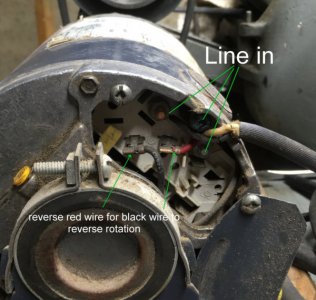I have the lathe running but this switch, which I think is original, is always staring me in the face.
Is there a generic diagram that shows how to wire this contraption??? Power will come to the switch first then will flow into the motor terminals dependent on how the rotor arm of the switch is pushed........ how do I identify the "other" connection tab that will reverse the rotation. I have reversed motor direction before but they were always new with instructions.... this is an oldy 1/3hp that came with the lathe.
Final question...... what is the value of the reverse rotation on a lathe??? is it really needed ........ when am I likely to use it...... or should I just install a modern kill switch like on my belt grinder???
.Caution I am a newbie with just enough knowledge to be dangerous.
Bob C
Is there a generic diagram that shows how to wire this contraption??? Power will come to the switch first then will flow into the motor terminals dependent on how the rotor arm of the switch is pushed........ how do I identify the "other" connection tab that will reverse the rotation. I have reversed motor direction before but they were always new with instructions.... this is an oldy 1/3hp that came with the lathe.
Final question...... what is the value of the reverse rotation on a lathe??? is it really needed ........ when am I likely to use it...... or should I just install a modern kill switch like on my belt grinder???
.Caution I am a newbie with just enough knowledge to be dangerous.
Bob C


